

The skeletal system helps us in the basic function of movement. Disorders of this system can range from the commonly occurring medical condition osteoporosis to the rarer kyphosis (hunchback). Read on to know more about the disorders of the skeletal system.
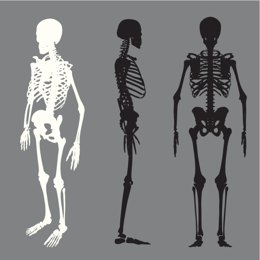 Have you ever wondered how we move around performing our day-to-day work? Our body is an amazing machine made up of a number of systems like the nervous system, the digestive system and so on. Each system is specialized in carrying out a particular function. However, none of the systems are exclusive. Each works in coordination with the other to maintain our health, and help us carry on with our daily activities. One of these systems is the skeletal system, which is made up of bones and cartilage. The bones along with muscles help us to move around and provide mechanical support to our body. The disorders caused to the skeletal system are not only painful but they make simple activities like bending to pick even a pencil, a difficult task.
Have you ever wondered how we move around performing our day-to-day work? Our body is an amazing machine made up of a number of systems like the nervous system, the digestive system and so on. Each system is specialized in carrying out a particular function. However, none of the systems are exclusive. Each works in coordination with the other to maintain our health, and help us carry on with our daily activities. One of these systems is the skeletal system, which is made up of bones and cartilage. The bones along with muscles help us to move around and provide mechanical support to our body. The disorders caused to the skeletal system are not only painful but they make simple activities like bending to pick even a pencil, a difficult task.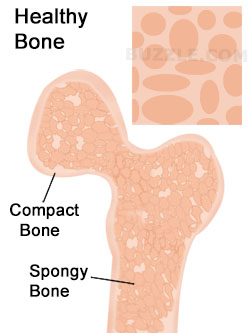
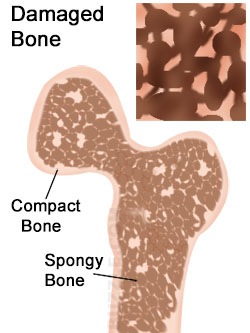 Osteoporosis is a very common bone problem especially in older people, and found more in women. It occurs when there isn't enough deposition of calcium in our bones. Phosphorus and mainly calcium are required for a number of processes in our body. Bones are the main source of these minerals. If the loss of these minerals is not compensated, the bones become weak and susceptible to fractures. Osteoporosis may be caused due to old age, hormonal imbalance, genetic disposition, certain diseases like bone cancer, and lack of proper diet.
Osteoporosis is a very common bone problem especially in older people, and found more in women. It occurs when there isn't enough deposition of calcium in our bones. Phosphorus and mainly calcium are required for a number of processes in our body. Bones are the main source of these minerals. If the loss of these minerals is not compensated, the bones become weak and susceptible to fractures. Osteoporosis may be caused due to old age, hormonal imbalance, genetic disposition, certain diseases like bone cancer, and lack of proper diet.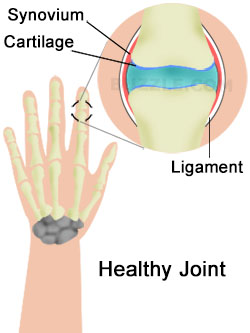
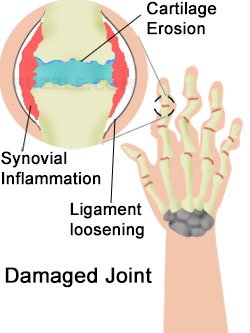 Arthritis is a joint disorder that affects millions of people in America itself. It is characterized by inflammation of the joints, pain, swelling, stiffness and tenderness in the swollen part. It includes a number of other disorders of the skeletal system, like osteoarthritis, rheumatoid arthritis and gout. Arthritis may be caused due to injury, disease or infection, hereditary factors or metabolic abnormalities. It may also be the result of old age, when the cartilage, covering the joints to protect the bones from getting damaged due to friction, cannot be formed properly.
Arthritis is a joint disorder that affects millions of people in America itself. It is characterized by inflammation of the joints, pain, swelling, stiffness and tenderness in the swollen part. It includes a number of other disorders of the skeletal system, like osteoarthritis, rheumatoid arthritis and gout. Arthritis may be caused due to injury, disease or infection, hereditary factors or metabolic abnormalities. It may also be the result of old age, when the cartilage, covering the joints to protect the bones from getting damaged due to friction, cannot be formed properly.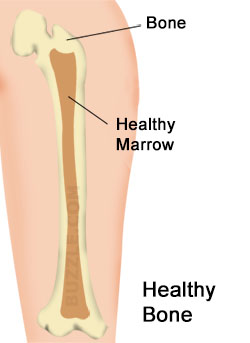
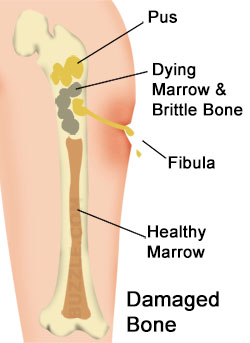 Osteomyelitis is a bone infection caused by a certain strain of the Staphylococcus bacteria. The bacteria can be carried by blood from other infected areas to the bone or it may reach the bone directly through an open wound. Osteomyelitis is characterized by pain in the infected bone, fever, chills, nausea and weakness. It is a disorder that is difficult to treat. It may involve needle aspiration in which a doctor removes a portion of the infected bone to diagnose the bacteria that has caused the infection. This may be followed by antibiotic treatment. In certain cases, surgery is performed on the patient to clean the infected area or to remove the dead tissue altogether.
Osteomyelitis is a bone infection caused by a certain strain of the Staphylococcus bacteria. The bacteria can be carried by blood from other infected areas to the bone or it may reach the bone directly through an open wound. Osteomyelitis is characterized by pain in the infected bone, fever, chills, nausea and weakness. It is a disorder that is difficult to treat. It may involve needle aspiration in which a doctor removes a portion of the infected bone to diagnose the bacteria that has caused the infection. This may be followed by antibiotic treatment. In certain cases, surgery is performed on the patient to clean the infected area or to remove the dead tissue altogether.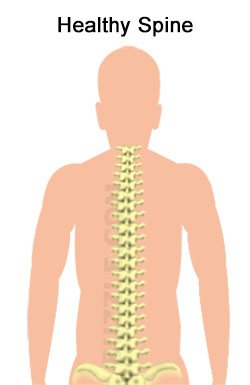
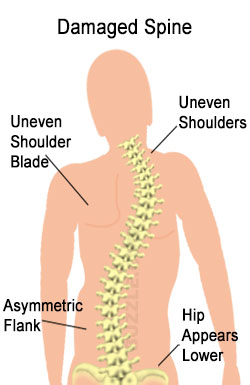 Scoliosis refers to the abnormal bending of the spinal column to one side. Depending on the degree of curvature, a back brace may be used or the vertebrae may surgically be fused to remove the curvature. Scoliosis may be a birth defect or it may be caused due to connective tissue disorders, metabolic diseases or muscular dystrophy. It is a disease commonly found in girls than in boys and they need a proper treatment to correct the problem. While some cases of scoliosis are mild, there are people who develop severe spine deformities as they grow older. A severe curve in the spine may reduce the gap within the chest resulting into malfunctioning of the lungs.
Scoliosis refers to the abnormal bending of the spinal column to one side. Depending on the degree of curvature, a back brace may be used or the vertebrae may surgically be fused to remove the curvature. Scoliosis may be a birth defect or it may be caused due to connective tissue disorders, metabolic diseases or muscular dystrophy. It is a disease commonly found in girls than in boys and they need a proper treatment to correct the problem. While some cases of scoliosis are mild, there are people who develop severe spine deformities as they grow older. A severe curve in the spine may reduce the gap within the chest resulting into malfunctioning of the lungs.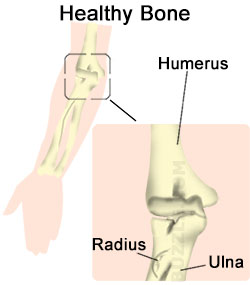
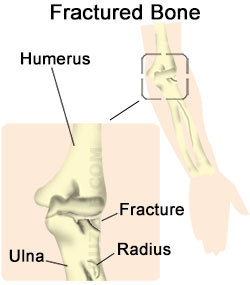 A bone is said to be fractured when there is a break in its continuity. Though the most common cause of a fracture is high impact, fractures can be considered as a disorder of the skeletal system when they are caused due to pathological reasons, like certain types of cancer or osteoporosis when the bones become weak. Although there are many types of fractures, the main categories under which they fall are: displaced, non-displaced, open and closed fracture. The severity of a fracture depends upon the area where it has occurred and the damage done to the bone as well as the tissue present around it.
A bone is said to be fractured when there is a break in its continuity. Though the most common cause of a fracture is high impact, fractures can be considered as a disorder of the skeletal system when they are caused due to pathological reasons, like certain types of cancer or osteoporosis when the bones become weak. Although there are many types of fractures, the main categories under which they fall are: displaced, non-displaced, open and closed fracture. The severity of a fracture depends upon the area where it has occurred and the damage done to the bone as well as the tissue present around it.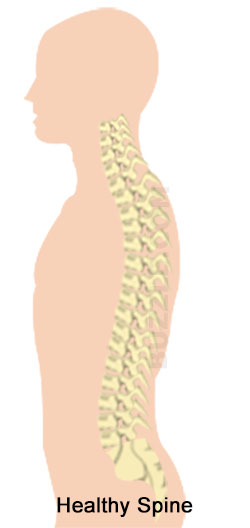
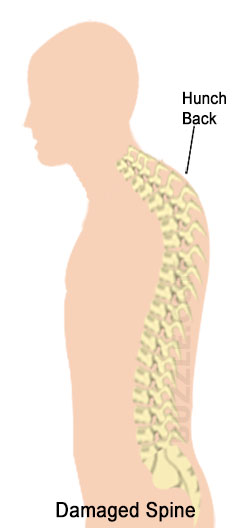 Kyphosis is more commonly known as hunchback. In this condition, the spinal column bends forward due to disorders like arthritis, osteoporosis, infections, problems during fetal development, endocrine diseases, spinal tumors or trauma. Although slouching may just cause difficulty in performing normal activities, in certain cases it may cause problems in breathing. There are two types of kyphosis- Adolescent kyphosis and Postural kyphosis. Adolescent kyphosis occurs due to irregularly shaped intervertebral discs and vertebrae causing the spine to bend. The problem becomes severe in adolescence and may cause serious pain. On the other hand, postural kyphosis may occur in adolescents as well as in adults and it may not be very painful. Also, the intervertebral discs and the vertebrae are in normal shape.
Kyphosis is more commonly known as hunchback. In this condition, the spinal column bends forward due to disorders like arthritis, osteoporosis, infections, problems during fetal development, endocrine diseases, spinal tumors or trauma. Although slouching may just cause difficulty in performing normal activities, in certain cases it may cause problems in breathing. There are two types of kyphosis- Adolescent kyphosis and Postural kyphosis. Adolescent kyphosis occurs due to irregularly shaped intervertebral discs and vertebrae causing the spine to bend. The problem becomes severe in adolescence and may cause serious pain. On the other hand, postural kyphosis may occur in adolescents as well as in adults and it may not be very painful. Also, the intervertebral discs and the vertebrae are in normal shape.
Copyright © www.orthopaedics.win Bone Health All Rights Reserved